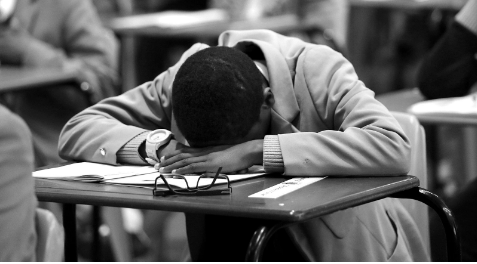Education stands as the bedrock of a thriving and empowered society, playing a pivotal role in a nation’s development. However, the dropout rates witnessed in Indian schools have emerged as a significant concern for policymakers and educators. This issue is not limited to India alone, as many developing countries face similar challenges.
The dropout rate is a crucial metric that gauges the efficacy of the education system by measuring the percentage of students who leave school before completing their respective grade levels. According to the 2021-22 data, India’s overall dropout rate stands at 1.5 per cent, showing a slight improvement from the previous year’s rate of 1.8 per cent. Nonetheless, the current rate remains worrisome, particularly in specific states.
The 2021-22 data reveals that the dropout rate is highest at the secondary level (grades 9-10) with 12.6 per cent, followed by upper primary (grades 6-8) with 3 per cent, and primary (grades 1-5) with 1.5 per cent. Additionally, the data indicate that girls experience higher rates compared to boys across all educational levels.
High rates are a cause for concern, as they significantly impact students’ prospects. Dropout rates are often linked to socioeconomic factors, poverty & lack of access to quality education but there are many other factors affecting these rates.
Many individuals perceive school dropout as a viable means to escape adverse socioeconomic circumstances and alleviate stress. However, they fail to acknowledge the inherent vulnerability of education and its potential to empower individuals as valuable contributors to society through the power of knowledge. Education serves as a cornerstone for shaping the character of youth and students, fostering humility and independence, facilitating social and emotional growth, and instilling a discerning sense of right and wrong. The escalating rate of school dropouts presents a concerning trend that hinders both personal and national progress in terms of literacy rates and overall development.
Addressing this pressing issue requires delving into its underlying causes rather than simply justifying or dismissing them. The factors contributing to this problem can be classified as push (external pressures or adverse social circumstances), pull (internal factors diverting students from completing their academic journey), or fallout (lack of progress leading to apathy). In this blog, we will thoroughly examine these causes, explore effective prevention strategies, highlight potential solutions, and provide evaluated facts to shed light on the issue of school dropout.
School Dropout Crisis: What Circumstances Lead To Student Off-Track Or School Dropout?

Academic Struggles:
One of the primary factors that lead students off-track is academic difficulties. When students face challenges in understanding or keeping up with the curriculum, they may gradually lose confidence and motivation, ultimately resulting in disengagement and dropout. Inadequate support systems, limited access to resources, and a lack of personalized attention can exacerbate this problem.
Socioeconomic Factors:
Socioeconomic circumstances significantly influence student outcomes. Poverty, unstable family environments, and limited financial resources often create barriers to education. Students from economically disadvantaged backgrounds may be forced to prioritize employment or contribute to household income, compromising their ability to attend school regularly and achieve academic success.

Personal and Emotional Challenges:
Students grappling with personal or emotional challenges may find it difficult to cope with the demands of school. Mental health issues, family disruptions, substance abuse, or bullying can all contribute to a student’s decision to drop out. Inadequate support services and stigma surrounding mental health further exacerbate these challenges.
School Climate and Environment:
The school climate and environment play a significant role in student engagement and success. Schools with a negative climate, marked by violence, bullying, or a lack of supportive relationships, can push students away. Feeling unsafe or unwelcome in the educational setting can prompt students to seek alternatives or disengage from learning altogether.
Lack of Relevance and Engagement:
When students perceive a disconnect between their educational experiences and their aspirations or real-life applications, they may lose interest and motivation. Irrelevant curriculum, uninspiring teaching methods, and limited opportunities for hands-on learning or vocational pathways can contribute to student disengagement and dropout.
Peer Influence and Social Pressures:
Peer influence and social pressures can sway students’ choices, sometimes leading them astray. Negative peer groups, involvement in risky behaviours, or prioritizing social acceptance over academic pursuits can steer students off-track and ultimately towards dropout.
Inadequate Support Systems:
Insufficient support systems within schools and communities can exacerbate the risk of dropout. Lack of guidance and counselling services, limited access to academic assistance, and inadequate intervention programs for at-risk students can impede their progress and increase the likelihood of dropping out.
Potential Dropout Prevention: How To Build A Certain Future For Students?

The prevention of school dropout is crucial for building a certain and prosperous future for students. Dropout rates not only hinder individual growth but also pose significant challenges to societal development. There are some potential strategies and interventions that can effectively prevent dropout, ensuring students have the opportunity to build a successful and fulfilling future:
Scholarships and Financial Assistance:
Providing scholarships, grants, or financial aid programs can alleviate the financial burden on students and their families. This support can enable them to continue their education without sacrificing their basic needs.
Access to Basic Resources:
Ensuring access to essential resources such as textbooks, school supplies, transportation, and meals can significantly reduce the barriers faced by economically disadvantaged students. Collaborating with community organizations and government initiatives can help address these resource gaps.
Early Intervention and Support:
Early identification of at-risk students is vital for dropout prevention. Implementing proactive measures, such as comprehensive student assessments and early intervention programs, can address academic, social, and emotional needs. Providing support, tutoring, mentoring, and counselling services can help struggling students regain confidence and stay on track.
Creating a Positive Learning Environment:
Fostering a positive and engaging learning environment is critical to keeping students motivated and connected to their education. Schools can incorporate innovative teaching methods, project-based learning, and real-world applications to make education relevant and captivating. Encouraging student participation, collaboration, and extracurricular activities can promote a sense of belonging and increase overall engagement.
Individualized and Personalized Education:
Recognizing that every student is unique, schools should adopt individualized and personalized approaches to education. This includes flexible learning pathways, differentiated instruction, and the integration of technology to cater to diverse learning styles and interests. By tailoring education to meet individual needs, students are more likely to stay engaged and persist in their academic journey.
Strengthening Support Systems:
Comprehensive support systems within schools and communities are essential for dropout prevention. This includes establishing robust counselling services, providing career guidance and exploration opportunities, and offering academic assistance programs. Collaborating with families, community organizations, and social services can further enhance the support network for students, addressing both academic and non-academic barriers.
Promoting Positive Relationships and Mentoring:
Meaningful relationships with caring adults, such as teachers, mentors, and role models, can have a profound impact on student’s motivation and sense of belonging. Implementing mentorship programs, and peer support networks, and fostering positive teacher-student relationships create a supportive environment that encourages academic success and reduces dropout rates.
Conclusion
Building a certain future for students involves proactive measures to prevent dropouts and provide the necessary support for their educational success. By implementing early interventions, creating positive learning environments, personalizing education, strengthening support systems, promoting positive relationships, targeting at-risk groups, and fostering collaboration, we can create a robust educational ecosystem that empowers students to overcome challenges and achieve their full potential.
Ultimately, by investing in dropout prevention strategies, we lay the foundation for a promising future for all students and enable them to become successful contributors to society. Together, we can create a more equitable and inclusive educational landscape for all students to thrive.
-ASHU